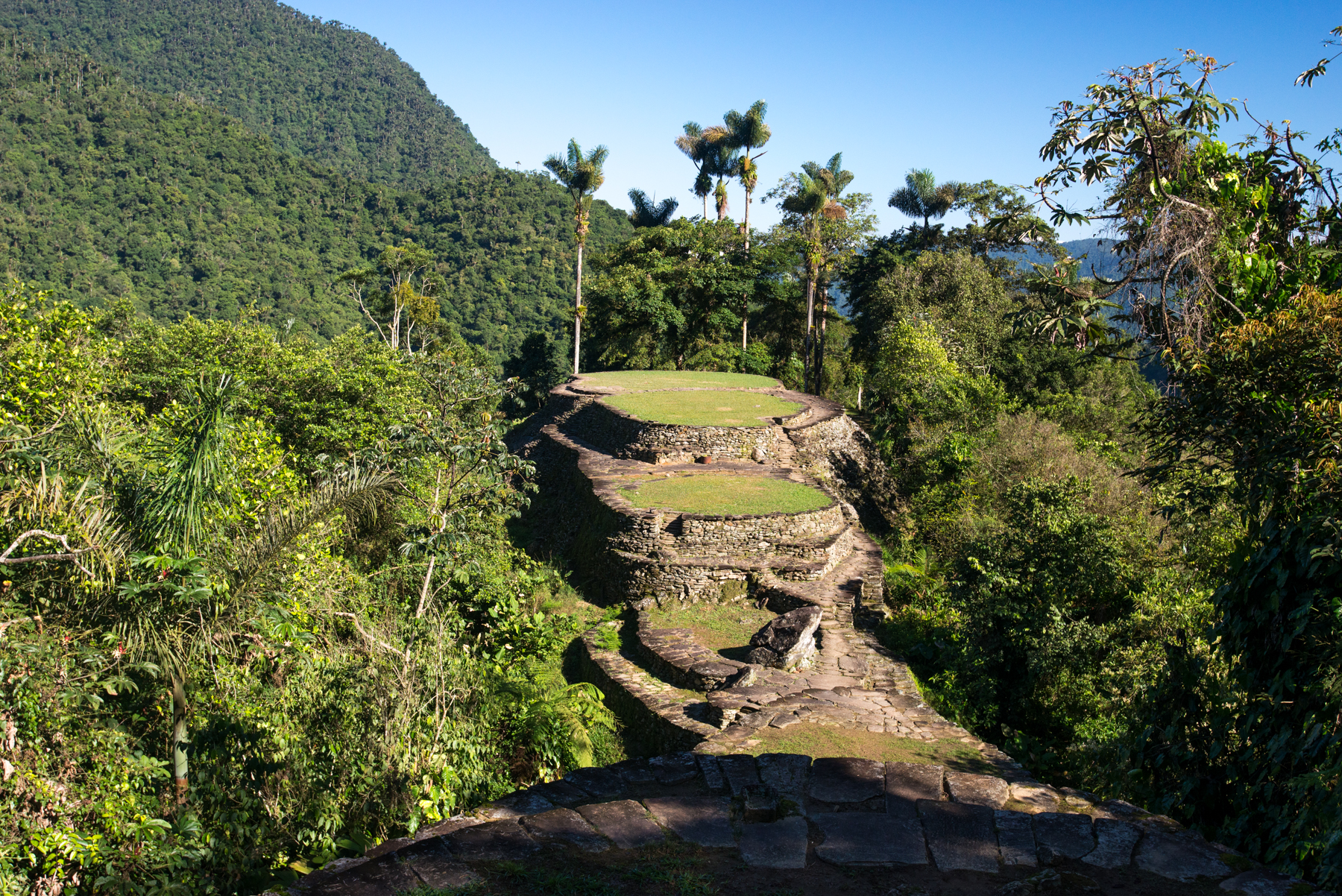
Sweat ran in thick rivulets down my back, soaking through to my heavy backpack. My face felt as hot as a pizza oven. My thighs burned and my dodgy knees were aching. My breath came out as an unpleasant sounding rasp. I was less than two hours into a four-day trek through the Colombian jungle and I was on the verge of giving up, turning back and heading for the beaches of Caribbean coast, an hour’s drive away, to do nothing but drink cocktails.
What kept me going was the thought of reaching the Lost City – the reason I was on this tough trek. Colombia’s answer to Machu Picchu, the Lost City, or Ciudad Perdida in Spanish, is a 1200-year-old city that was abandoned four centuries ago when the Spanish arrived in Colombia, and remained a secret to the outside world until it was discovered by gold hunters in the 1970s. There’s no way of accessing the ruins other than by hiking 23 kilometres through the steep, muddy, mosquito-infested jungle of the Sierra Nevada.
Once I’d conquered that first gruelling hill on the first afternoon of the hike, I’d like to say that it got easier, which it didn’t. The rest of the hike was tough (mentally and physically) – brutally hot, humid and endlessly hilly. There were lots of river crossings and slippery rock clamberings and fitful sleeps in tiny crammed together bunkbeds at the rustic camps along the way, and scorpion sightings and sore legs.
Despite all of that, the Lost City hike was spectacularly beautiful, a lot of fun and a pretty adventurous introduction to Colombia. We walked over ridges above misty green valleys and through stretches of dense forest, with parrots and butterflies flitting between trees. To cool down, we dove into the clear water of rivers and jumped off waterfalls, and ate strips of juicy watermelon and slices of oranges as pick-me-ups after sweaty hill climbs.
From our knowledgeable guide, Wilson, we learned about how the area had been full of marijuana plantations of a strain called Santa Marta Gold 25 years ago. When cocaine became popular, the marijuana was replaced with coca plantations. The cocaine was manufactured in laboratories deep in the jungle, and transported in bags on mules to the coast, where it was sent by speedboat to the Caribbean and the US. A few years ago, as part of the US’ War on Drugs campaign, the coca plantations were destroyed by the Colombian government. According to Wilson, there used to be 900 people living in the area, but after the crackdown, only around 50 remained. The rest moved to the city of Santa Marta to look for work, but with the decrease in cocaine smuggling, the whole city’s economy was depressed. Wilson’s insight certainly gave me a new perspective on Colombia’s drug trade and how many peoples’ lives it affects.
The cocaine trade is an association many people make with Colombia, and the second is with guerrillas and kidnappings. In 2003, a group of tourists were kidnapped from the ruins and held hostage for three months by Marxist rebels. After that, visits to the city were suspended for a few years, but since the route was re-opened in 2005, there haven’t been any incidents. For the protection of the area there are now two army camps – one on the hiking route and one at the city – filled with gun-wielding, cigarette smoking recruits who all look about 16, and love posing for photos.
I had begun to really enjoy the hike by the time we reached the Lost City on the morning of the third day, after the thorough workout of a climb up 1200 narrow steps, and the trek had become as much about the beauty of the scenery, the meditative experience of walking for hours every day, and learning about Colombia as it was about actually reaching our destination.
The ruins themselves are undeniably atmospheric, although not nearly as dramatic as Machu Picchu (though, on the plus side, there were about 30 people in total at the ruins at the same time as us, as opposed to the thousands at Machu Picchu). Surrounded by mountains streaked with cascading waterfalls and flanked on all sides by trees, the series of stone and grass terraces rises out of the jungle like something from an Indiana Jones movie. We had arrived early in the morning, before the sun had risen behind the peaks, and stood on a hill, watching in silence as the light went from blue to golden over the lilypad terraces.
While gold hunters introduced the Lost City (which was originally called Teyuna) to the world in the 1970s, indigenous local tribes had actually known about the ruins all along – the site is sacred to them, and they wanted to keep it hidden from outsiders. Much of the city’s history remains unknown (including the meaning of a boulder etched with carvings which may be an undecipherable map to the area’s concealed gold mines), and sadly, many of its treasures were looted by gold hunters to be sold on the black market. It’s believed to have housed between 2000 and 8000 people, and may have been a political centre. The site is spread across 86 acres, and is one of the largest pre-Columbian settlements discovered in the Americas. Most the city, however, is still covered in jungle, and there are no plans to clear it.
Teyuna is certainly not lost any more, especially as tourist numbers increase every year, but the air of mystery that hangs over the site, its isolation and spectacular jungle setting, and the fact that you have to sweat and toil for three days to get there (and then return on the same hilly slopes) means it still feels gloriously adventurous.
How to do Colombia’s Lost City hike
Google+
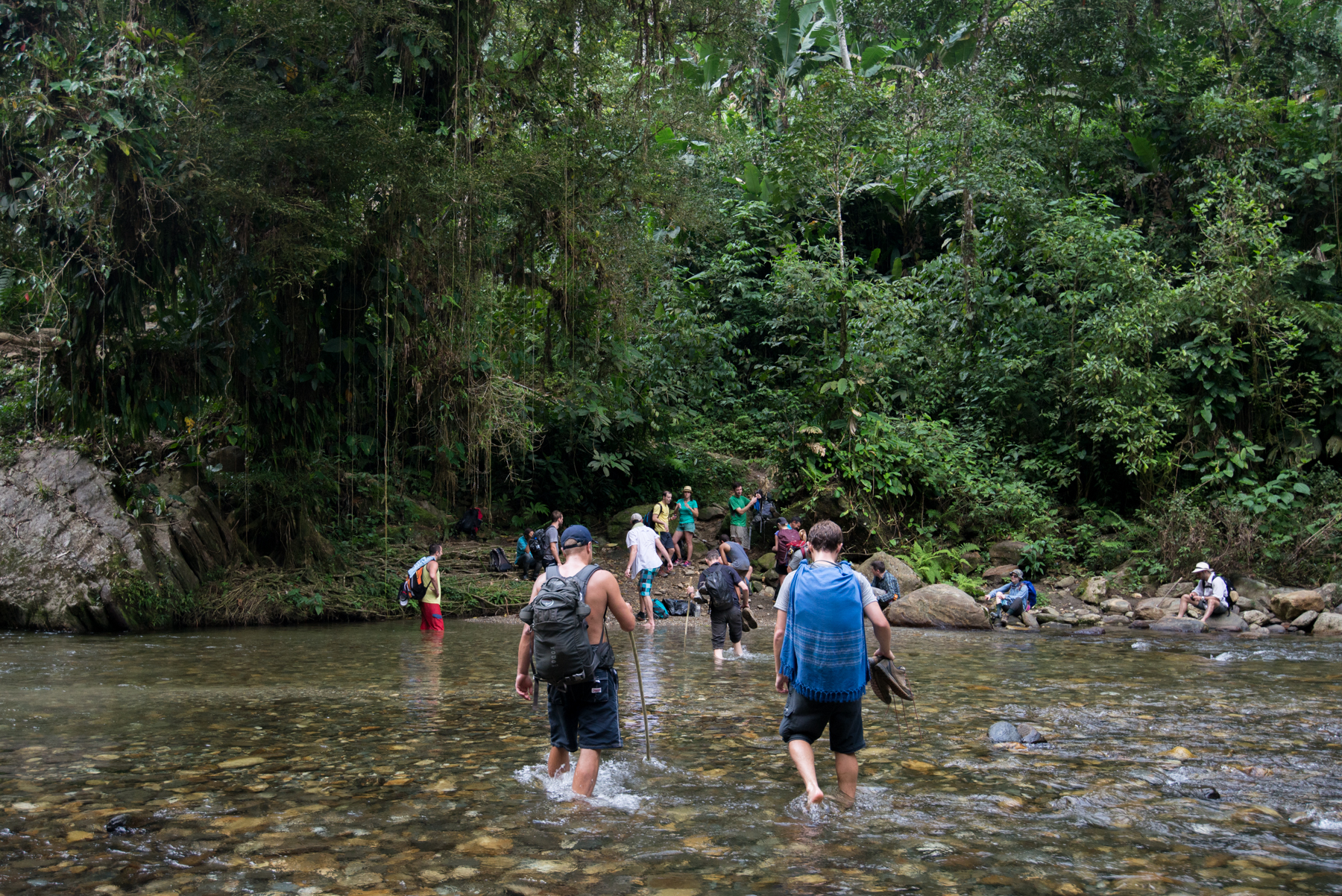

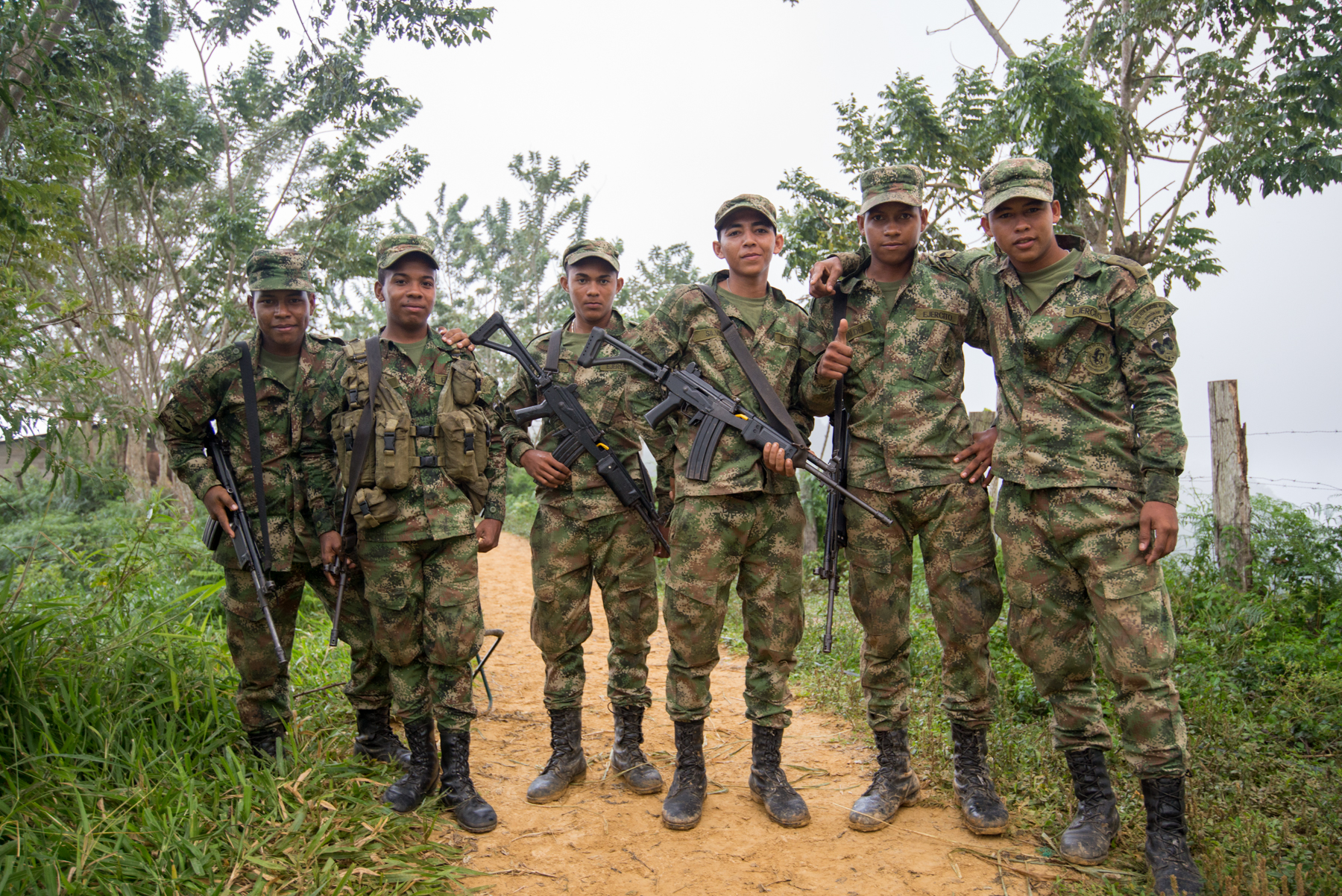

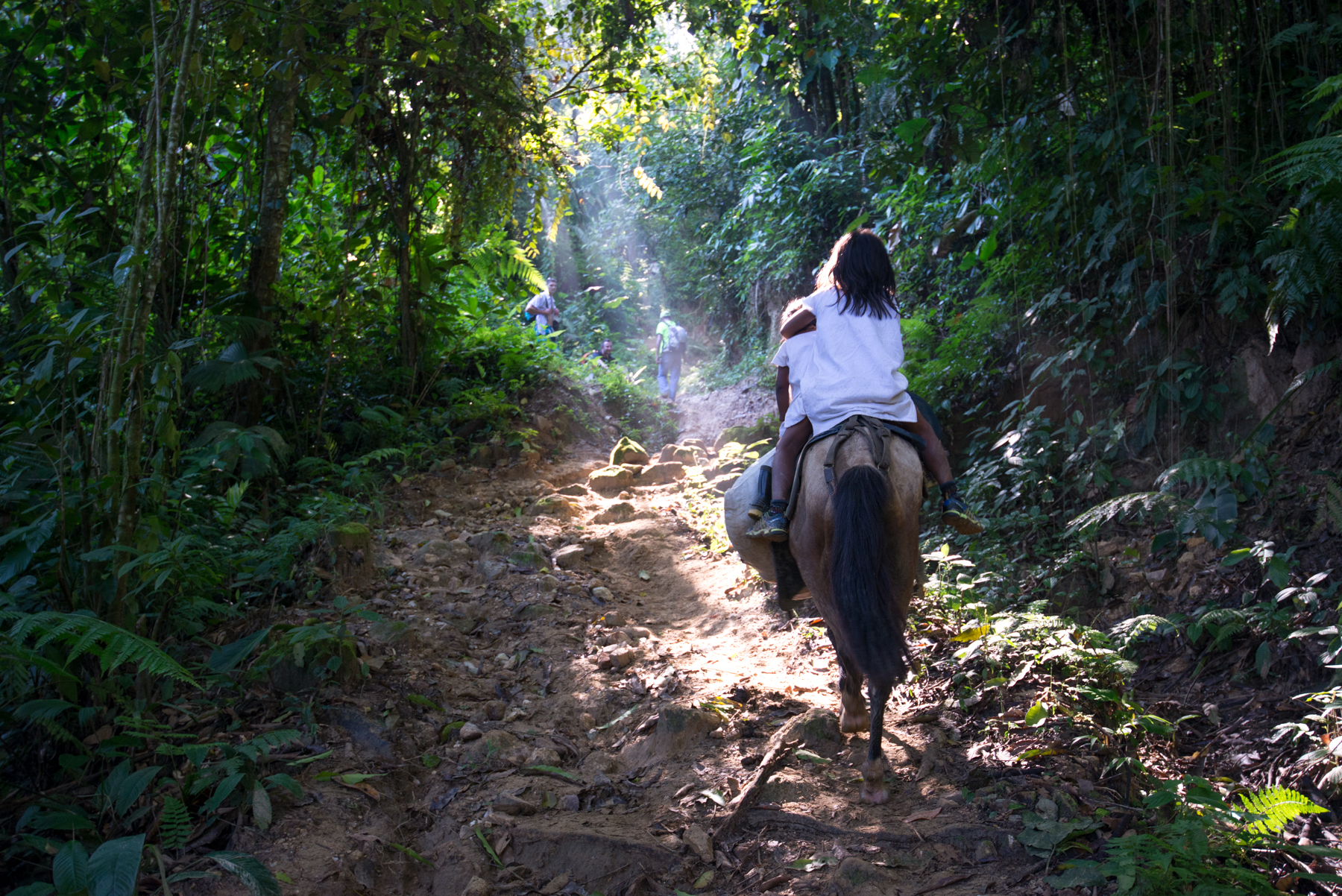
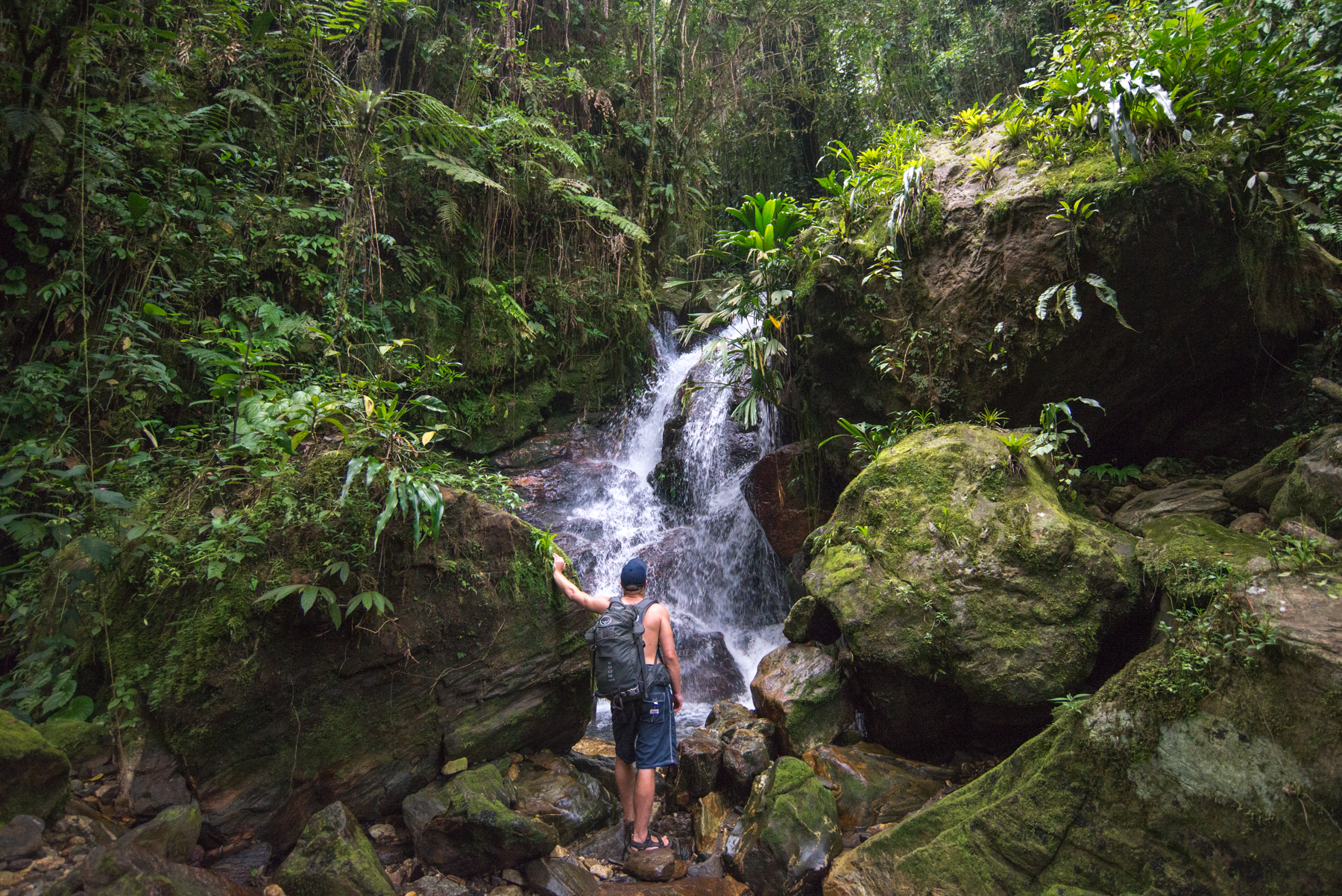
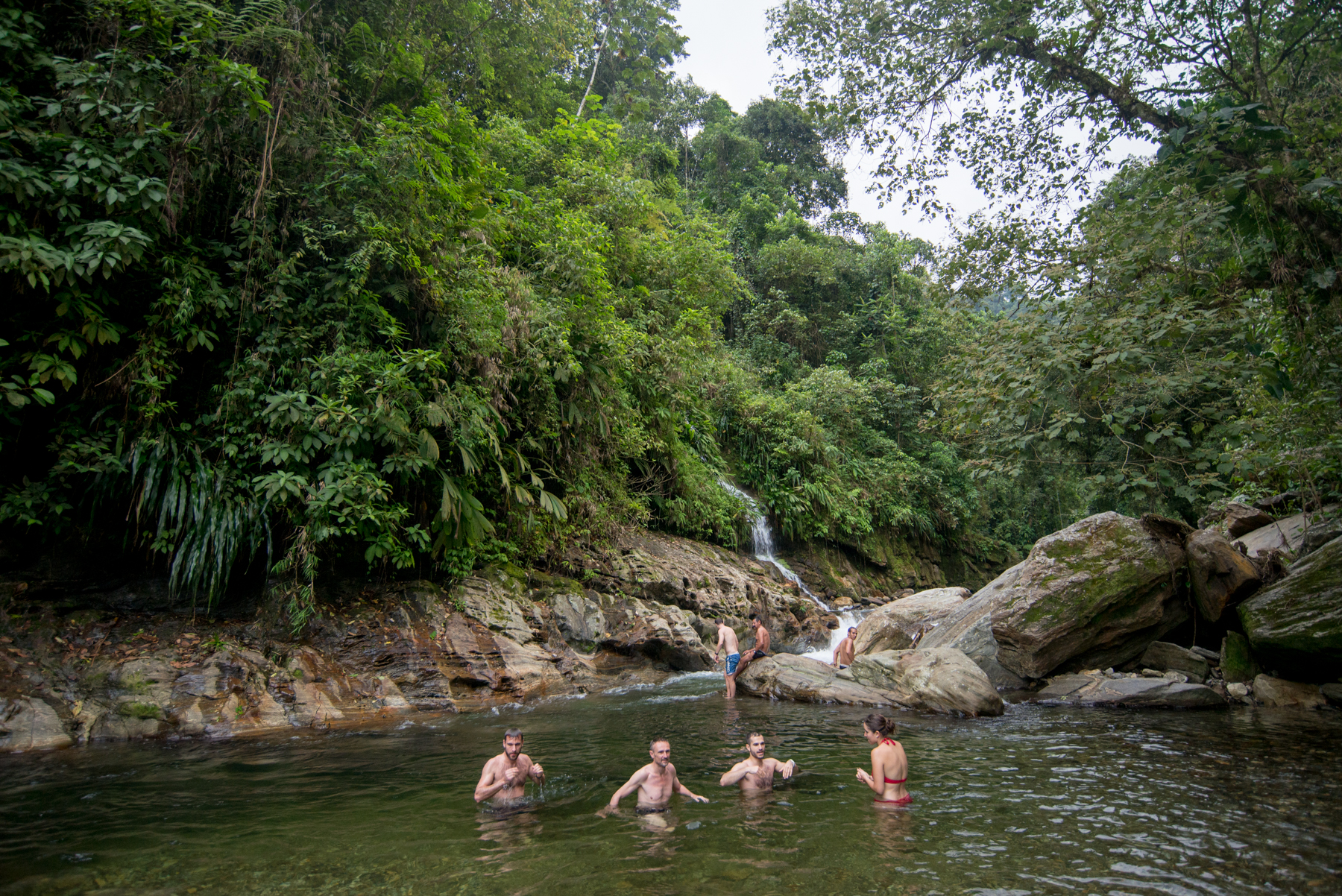
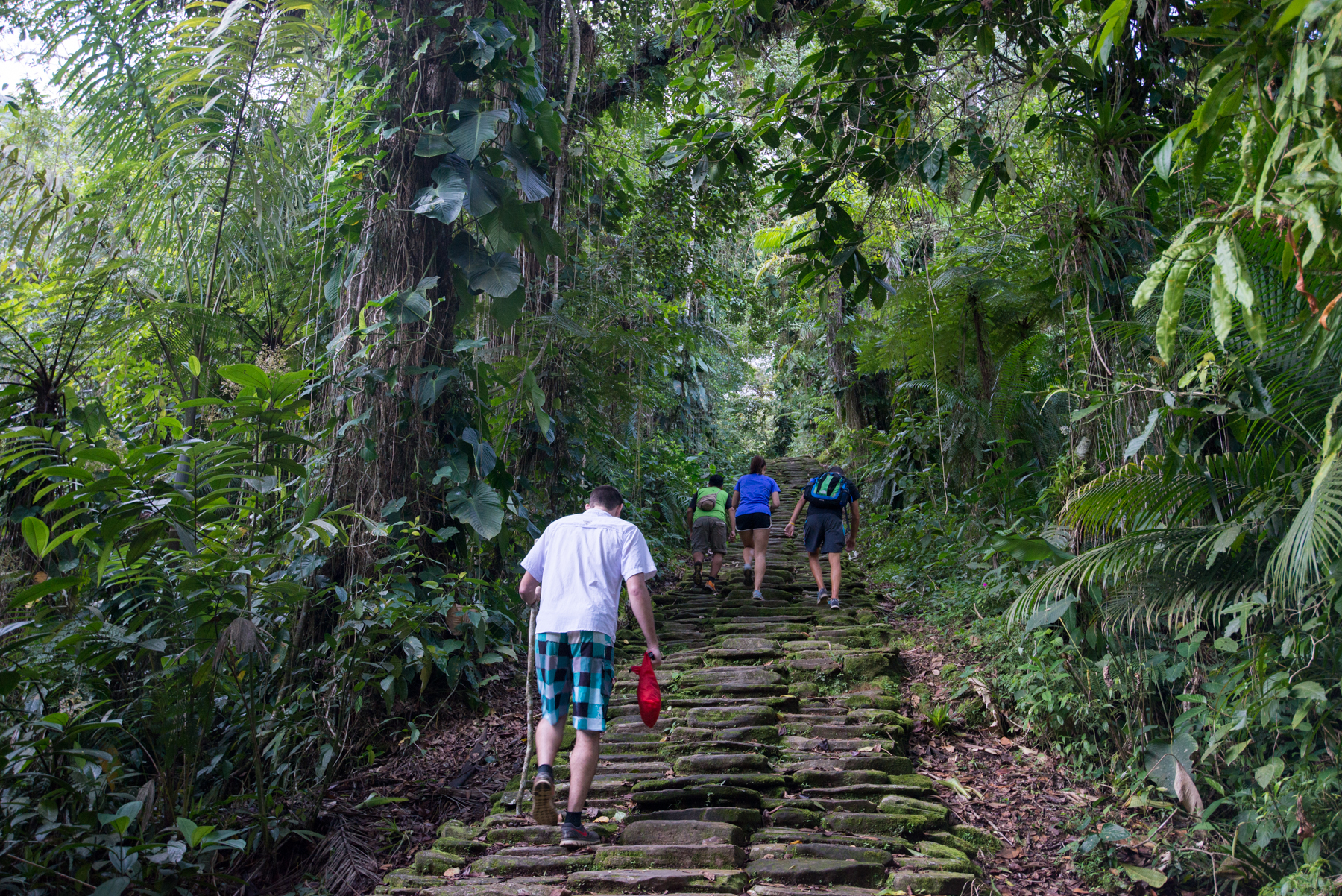
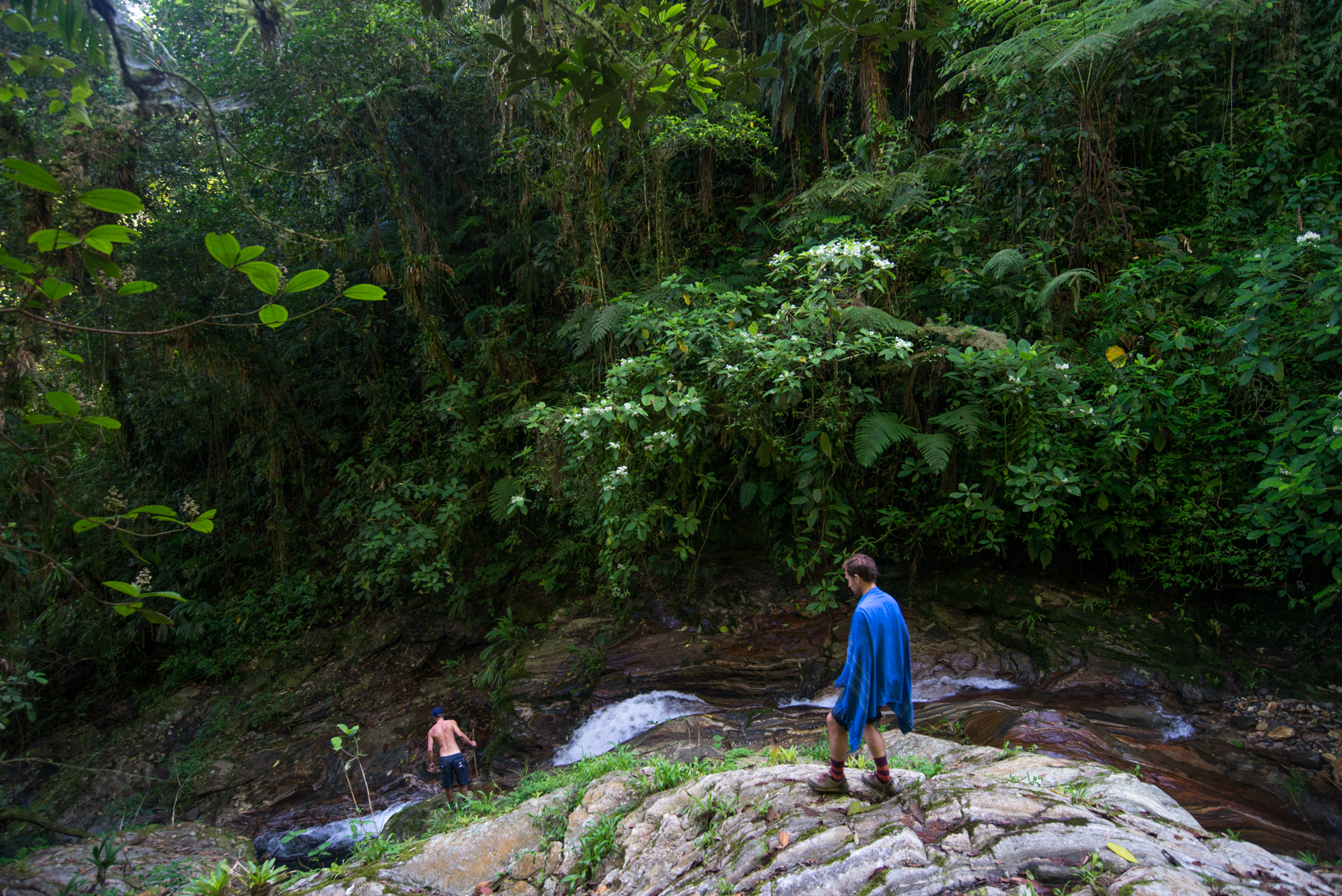
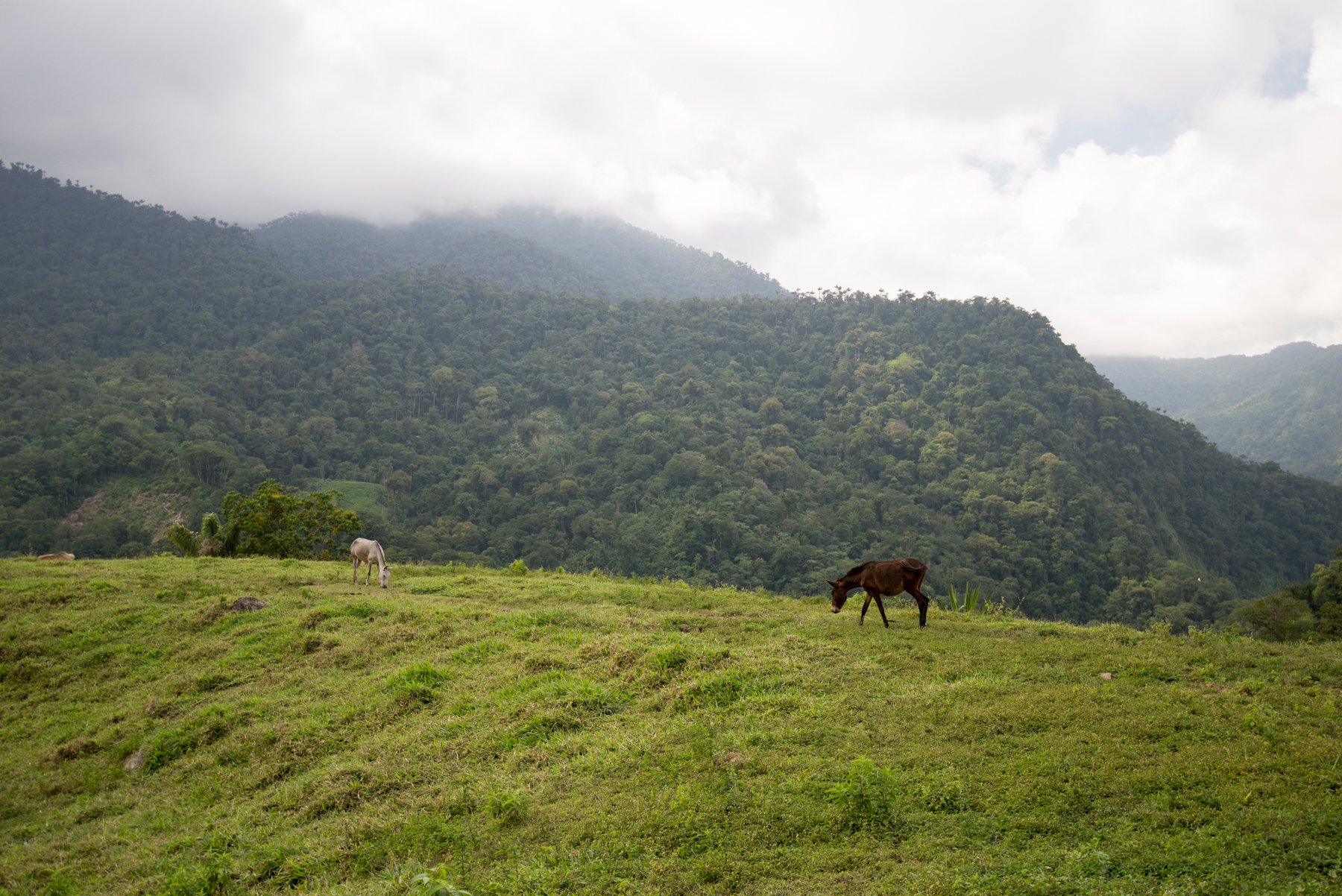
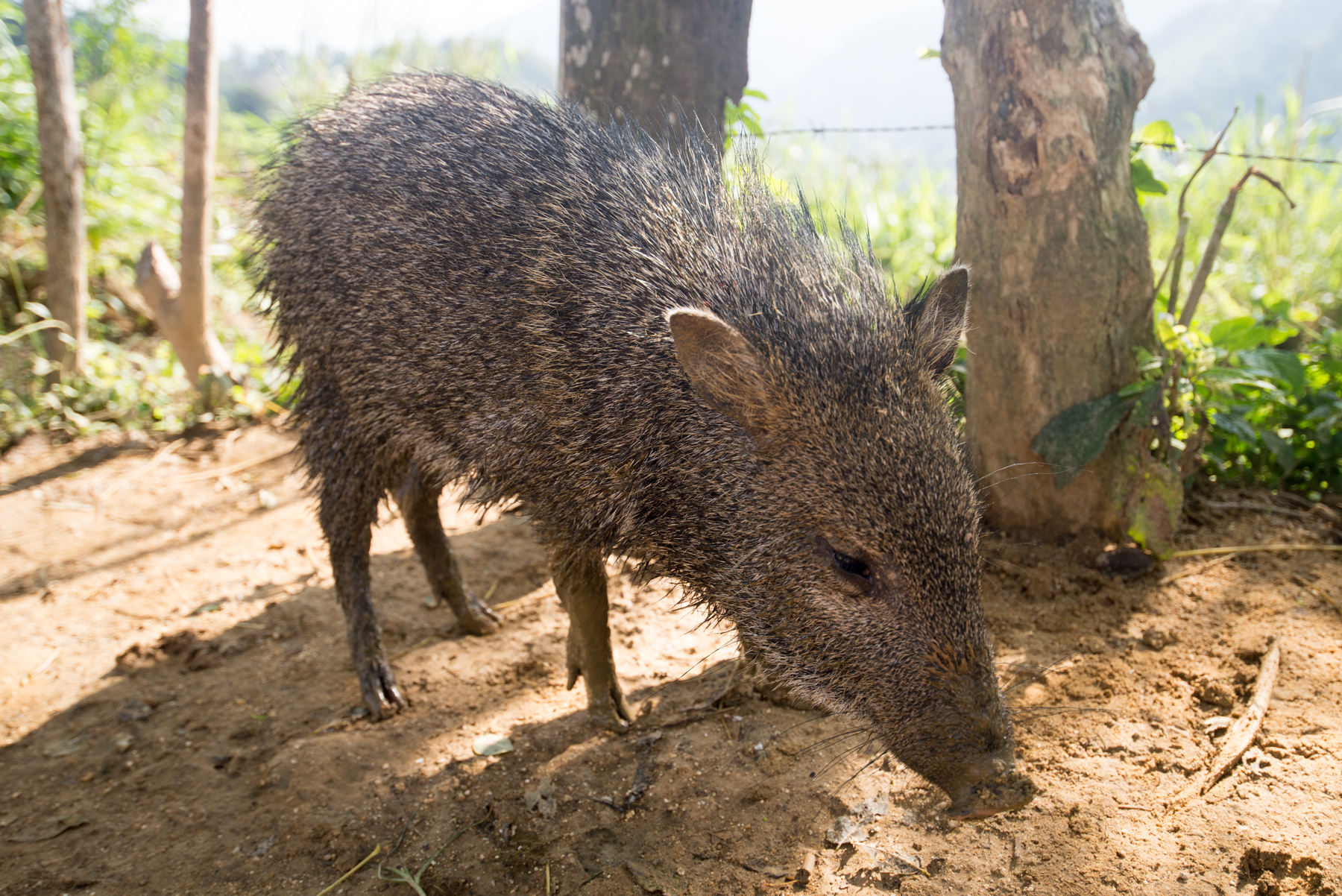

Wow. I’m sorry about those bug bites! I always like the environmentally friendly stuff myself, but I’m not afraid to go chemical deadly. You know? Was all that worth seeing the lost city? I didn’t even know about it until I read it here. I hope you feel better!
Yes the trek was definitely worth it! I felt sick for about 9 days with the dengue/chikungunya, but all recovered now. My natural remedy was a smoothie of papaya leaves (which tasted horrible) and chewing moringa seeds (which also tasted horrible).
Did you do the hike in February? My wife and I were thinking of going in mid-feb. You mentioned that it was super hot. We did the Inca trail hike in Sept. And it was perfect hiking weather, dry and not too hot.
Bryan
Hi Bryan, we did the hike in December (just before Christmas, in fact). I’m not sure what the weather is like in February – just check that it’s not rainy season. I think any time of year is really hot and humid but you don’t want to be going when it’s raining a lot as it will be extremely muddy and the river crossings may be more challenging.
HI, great photos by the way. I am Colombian and plan to visit Medellin and maybe on the way back to NYC I will make a stop to explore this city, I have read a lot about it and it seems to be on the less popular ancient ruins but then again that keeps the mystery alive. I read it hasnt yet been cleared and there are no plans to, is that part accesible,
Hi Johnny, hope you make it to Ciudad Perdida! Yes it’s true most of it hasn’t been cleared yet but the area with the main ruins is accessible.
Hi Sarah,
would you recommend a backpack of a particular type. Or something you tough would have been really useful on you trip and did not take?
Hi Richard,
I had a small backpack that I usually use for day hikes so it wasn’t ideal. I’d suggest taking a backpack that’s meant for multi-day hikes, although you don’t want anything too big. You also need some waterproof covering for your bag – our guides brought big plastic bags for us. The main thing is to have a bag that’s comfortable! You don’t need anything particularly tough.
Enjoy the hike!
Sarah